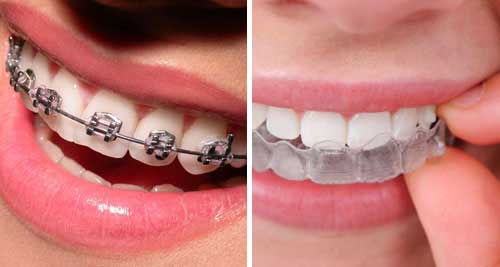Navigating the waters of childhood is an intricate dance of growth, learning, and development. Among these myriad changes, your child’s oral health should be a crucial focus. One common question that parents often find themselves asking is, “When should my child get braces?” We’re here to guide you through the orthodontic journey, discussing the optimal time for braces and the conditions they can correct.
The Ideal Age for Braces
According to the American Association of Orthodontists (AAO), children should have their first check-up with an orthodontist no later than the age of seven. Though this might seem early, orthodontists can detect subtle issues with jaw growth and emerging teeth even while baby teeth are still present. Early detection of potential problems can lead to more straightforward, effective treatment.
Now, this doesn’t necessarily mean your child will get braces right away. Many orthodontists will take a “wait and see” approach, monitoring your child’s growth patterns to determine the best time to start treatment. For some children, early treatment can prevent more serious problems from developing and may make treatment at a later age shorter and less complicated.
Conditions That Require Braces
Braces aren’t just about achieving a straight, attractive smile; they play a crucial role in promoting overall oral health. Here are some common conditions that can be corrected with braces:
Braces aren’t just about achieving a straight, attractive smile; they play a crucial role in promoting overall oral health. Here are some common conditions that can be corrected with braces:
The Benefits of Early Intervention
Early intervention can prevent the need for tooth extraction and surgery in the future. Orthodontic treatments not only improve the aesthetics of your child’s smile but also enhance oral functions like chewing and speaking. Moreover, straight teeth are less prone to decay, gum disease, and injury.

Remember, every child is unique, and so is their path to a healthy, confident smile. If you’re unsure about whether or not your child needs braces, it’s best to consult with an orthodontist. They can provide a personalized treatment plan based on your child’s individual needs.
- Crowding: This happens when there isn’t enough space in the mouth for all the permanent teeth to grow properly, leading to misaligned teeth. Timely intervention can help guide teeth into the right position.
- Overbite: An overbite is when the upper front teeth stick out over the lower teeth. Not only can this affect a child’s appearance, but it can also lead to long-term issues like uneven tooth wear and jaw problems.
- Underbite: This is when the lower teeth are forward or the upper teeth are back. Similar to an overbite, an underbite can lead to difficulty chewing and uneven tooth wear.
- Crossbite: A crossbite is when the upper teeth do not come down slightly in front of the lower teeth when biting together normally. It can lead to tooth stratification and misaligned jaw growth.
Braces are not merely a milestone but a stepping-stone to your child’s lifetime of radiant smiles and robust oral health. Embrace the journey, and know that you’re setting the stage for a future full of confident grins!
READ MORE: Demystifying Root Canal Treatment: Your Top Questions Answered.


